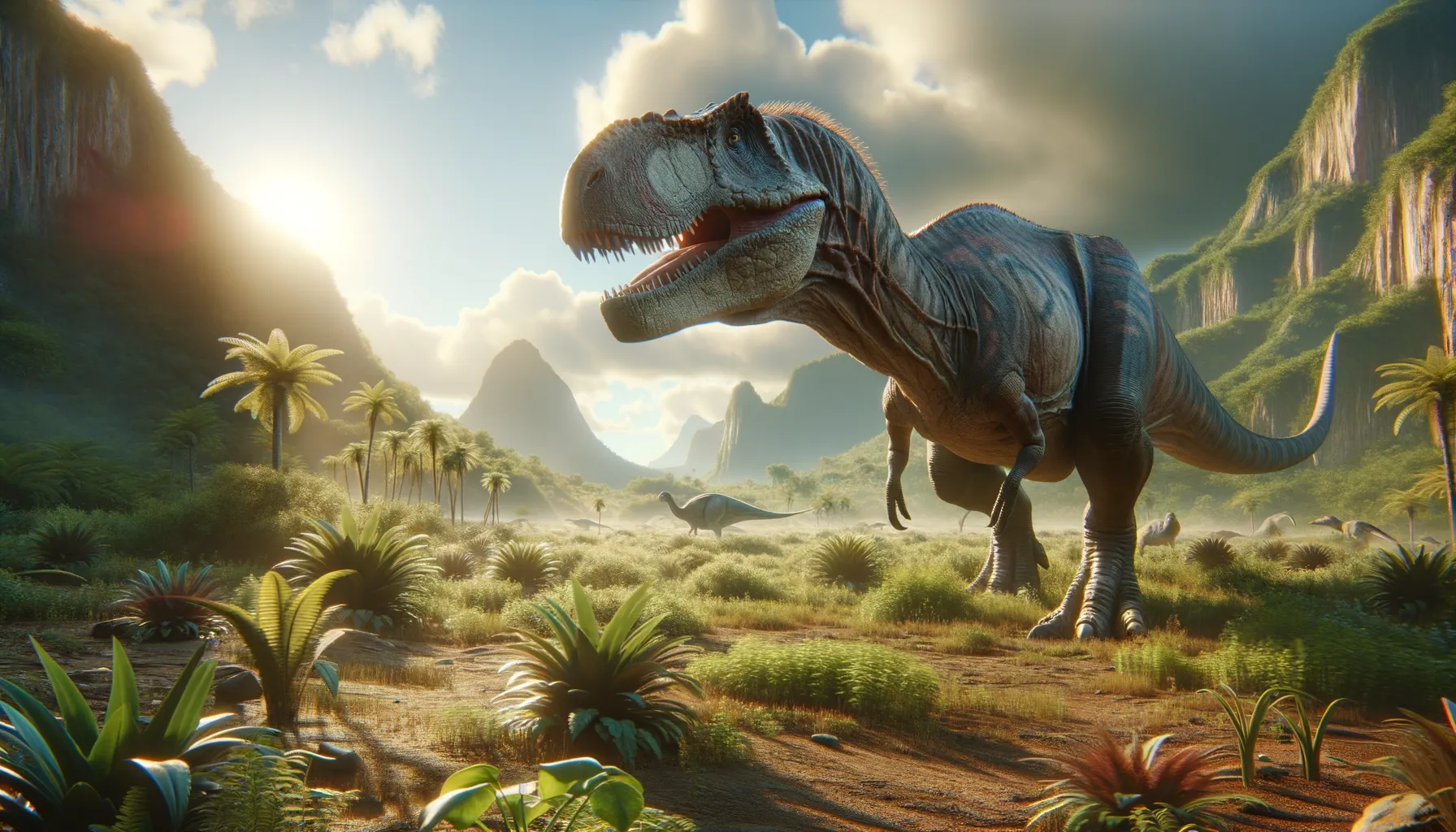
Uteodon
Jurassic grazer from the great plains.
Period
Jurassic
Length
Reaching up to 6.5 meters long.
Height
Around 3 meters at the hips.
Weight
Approximately 1,000 to 2,000 kg.
Uteodon was a herbivorous dinosaur that roamed North America during the late Jurassic period. Recognized for its bulky body and beak-like mouth, it resembles the Iguanodontian group. It was a plant eater, contributing to the ecosystem by helping to shape the vegetation landscape of its time. Its physical build suggests a creature well-suited to a life of grazing, with a sturdy frame to support its weight.
Diet
Uteodon was a herbivore, feeding primarily on the plentiful plant life that thrived during its era. Its beak-like mouth helped it strip foliage efficiently. This diet allowed it to take advantage of various flora, providing a stable food source.
Hunting
As a herbivore, Uteodon did not engage in hunting behavior. Instead, it would graze on available plant matter, relying on its size for intimidation rather than predation. Its large size deterred smaller carnivores from approaching.
Environmental challenges
Uteodon faced several environmental challenges, including fluctuations in climate and competition for plant resources. Seasonal changes affected the availability of its food, necessitating migration or adaptation to different vegetation types. Periodic droughts may have also stressed its food resources, requiring it to travel further in search of sustenance.
Speed
Moderate, suitable for a herbivore searching for food.
Lifespan
Estimated around 20-30 years, typical for its size.
First discovery
First described in 1909 by paleontologist Charles W. Gilmore.
Fun Facts
- Uteodon lived during the late Jurassic period, roughly 150 million years ago.
- This dinosaur was discovered in Utah, and its name means 'Ute's teeth,' named after the Ute Native American tribe.
- Uteodon was a herbivore, which means it ate plants, likely munching on ferns and other lush vegetation of its time.
- It belonged to the iguanodontian group of dinosaurs, known for their beak-like mouths, perfect for cropping plants.
- Unlike the larger and more famous dinosaurs of its time, Uteodon was a modest-sized creature, growing to about the length of a small school bus.
- Paleontologists believe Uteodon may have lived in herds, which could have helped protect them from predators.
- The discovery of Uteodon has helped scientists learn more about the diversity and evolution of plant-eating dinosaurs.
Growth and Development
Uteodon would have exhibited steady growth from hatching to full size, with significant changes occurring during its juvenile stages. Like many dinosaurs, growth rates might have varied, speeding up during times of plentiful resources. Fossil evidence suggests that sexual maturity was reached before maximum size, allowing for reproduction while still growing.
Habitat
Uteodon inhabited lush flood plains and forested areas, favoring environments with an abundance of plant life. This habitat provided both food and protection from predators, with ample space for herds to move and graze. Water sources within these regions were vital for sustenance and survival.
Interaction with other species
Uteodon interacted primarily with other herbivores and the occasional predator. In herds, they could efficiently graze large areas and communicate potential threats. Predators would pose a risk, particularly to the young, but herd behavior increased their defensive capabilities.
Natural lifespan
Uteodon could live up to approximately 30 years in the wild.
Reproduction
Reproduction involved the laying of eggs, as with other dinosaurs. Evidence suggests nesting behaviors, potentially communal nesting sites to increase offspring survival rates. After hatching, parental care was likely minimal, with young Uteodon relying on innate behaviors or herd protection.
Social behaviour
Uteodon likely exhibited social behavior typically seen in herbivorous dinosaurs, such as forming herds. This social structure offered protection against predators and facilitated efficient foraging. Communication within the herd would have been significant for signaling danger or coordinating movement.
Fossil locations
Fossils of Uteodon have primarily been located in North America, particularly in the western United States. Extensive finds have helped reconstruct its habitat and behavior. These discoveries provide valuable insights into the ecosystem of the Jurassic period.
